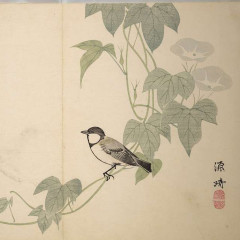After finishing A Court of Thorns and Roses last week I swiftly moved onto A Court of Mist and Fury. I finished the first book and, in my opinion, it was all wrapped up rather nicely, while also leaving me with just a smidge of yearning to find out what happens next.
But, this is a YA fantasy, and if the book’s main couple get to go home and live ‘happily ever after’ something’s gone wrong, and you can be sure that there is something that will prevent that from happening.
The novel begins with the book’s protagonist Feyre recounting her final trial from ‘under the mountain’ – the harrowing place the first novel’s climatic ending took place in. It was a trial in which she was forced to murder three fae in order to save the whole of Prythian. In a dramatic twist, the final faerie she is forced to murder is herself and this resulted in her her current struggle with PTSD while adjusting to her new life.
This struggle is in fact one of the most well written accounts of a character suffering with PTSD in any book I’ve ever read. For this, Sarah J Maas deserves an almighty round of applause, as it’s a subject so easy to butcher in fiction novels.
If you’d forgotten about Rhysand between books, then you are reminded of both his character and the bargain Feyre made with him to protect her by the magical tattoo on her left hand. However, it appears to the audience that amongst the Spring Court this bargain has become something of an elephant in the room.
To recap, in exchange for Rhysand healing a broken bone under the mountain, Feyre is required to spend a week with him in the Night Court every month for the rest of her life. However, for no apparent reason Rhysand never shows up once in the three months that pass between books. Thus every character is just *tense*.
As an audience it’s funny because we know that he can’t inherently be the ‘big bad high lord’ that every other character except Feyre thinks he is, so while the characters are on edge not wanting him to turn up, you find yourself on edge wishing for him to make an appearance.
Then amongst all this dramatic tension Tamlin, Feyre’s book one love interest and a fairly decent guy, becomes incredibly possessive and abusive within the first ten pages. All in all, this wasn’t the kind of start I was hoping for.
Despite Feyre being a badass at the end of book one, suddenly she’s not even allowed to be in a room alone. With no life purpose and an eternal life ahead of her, it doesn’t take a genius to figure out this wouldn’t be helpful for anyone’s PTSD recovery.
To make matters worse, Tamlin’s emissary Lucien ─ who you could have almost called a friend of Feyre’s in the first book ─ repeatedly decides not to call his friend out on his selfish behaviour. Thus, any respect I had for him and his tragic backstory went completely out of the window before the end of the second chapter.
Alongside a seemingly random introduction of a High Priestess called Ianthe, this toxic abuse continues for several chapters. Alongside tediously strung out wedding planning, we find out that despite being married to a High Lord, Feyre won’t become a High Lady for the ‘simple’ reason that “there has never been a High Lady”.
After yet another few chapters of this nonsense, their wedding day finally rolls around, followed by Feyre having what could only be described as a panic attack while walking down the aisle. But all of the tension that had been laboriously crafted vanishes the moment Rhysand decided to make a visit.
With all the foreshadowing going on, coupled with how annoyed I got at Tamlin’s gaslighting I stopped thinking about when Rhysand was going to show. Nevertheless, I genuinely don’t think there could be a more on-character reveal for him when he decides to gatecrash the big day, before proceeding to call in his bargain, whisking Feyre away. Once again big clap for Maas.
Over the next week in the book, we learn that, as Maas hinted in book one, Rhys is actually a really good guy. In fact at times I found myself near suspicious of his ‘niceness’, but after reading the entire thing it’s all very genuine.
After returning back to the Spring Court, despite being only a little bit into the book, you find yourself rooting for Feyre falling out of love with Tamlin and in love with Rhys.
If I’m being perfectly honest no other book I’ve read has made me go from absolutely loving two characters together to detesting one and rooting for the other to find a completely new relationship so quickly.
In real life it might seem impossible but somehow this dramatic twist works.
Instead we as the reader have to endure an irksome back and forth between Tamlin’s abuse, Lucien’s compliance and Feyre’s growing depression. Eventually, this culminates in Tamlin magically sealing Feyre in the house, unable to even stretch a hand out of a window.
After another panic attack, Rhysand’s cousin Mor has to walk in and carry Feyre out to another court in order to minimise the backlash of Tamlin after he effectively rescues (or according to Tamlin steals) his bride away.
Feyre then decides to join Rhys’ inner court and the rest of the book is spent following them as they galavant around trying to prevent a potential war.
We learn about different characters and how they are dealing with the aftermath of ‘under the mountain’. Maas has done well to detail their struggles without simplifying them so a teenage audience can relate to them. Instead, it creates a huge sense of empathy between the reader and characters they’re reading.
While I had many qualms about how the first book prioritised mystery over character development, leaving many characters as frustratingly two-dimensional, no such faults exist.
Of course there are still minor characters who just seem to be described as ‘bad’ or ‘evil’ with no explanation as to why, but with the book’s length I suspect there was no extra page space for such a description to take place.
My main point of contention about this second book is the dramatic shift toward an explicit nature. Throughout the second half I genuinely felt that I was reading the teenage version of Fifty Shades of Gray, and it was uncomfortable at best.
By all means, when two characters are ‘mated’ there’ll be certain expected scenes, especially by the book’s intended teenage audience. But I couldn’t help but want to skip out certain chapters that revolved entirely on overly descriptive bedroom activity.
But then again, if I were fifteen reading this I probably would’ve wanted even more so at least you can argue it’s on brand?
Any qualms I had about oddly placed scenes were quickly forgotten about when a surprise battle hits the Night Court’s hidden ‘City of Dreams’. Over the course of the book we learn that when the seven High Lords made Feyre into a faerie she inherited a kernal of their power.
Basically she can perform every type of magic they all possess individually.
There was nothing more epic than Feyre creating water wolves and drowning Hybern soldiers. That was by far my favourite scene of any book I’ve read in the last few years. However, the most heartbreaking was the gut wrenching way this book ends with the plot twist of the century.
Sarah J Maas goes to such great lengths to make you hate Tamlin’s guts in this book but honestly, the ending scene outshines all of the pages of questionable things he does in this book combined.
The suspense created at the end works fantastically. It left me pleasantly surprised at how much Maas stepped up her game on this second installment, and for the first time ever I wasn’t disappointed in a boring lack luster middle book in a trilogy.
If I wanted to pick up this book soon after finishing A Court of Thorns and Roses, then I want to start the third book now.








0 Comments